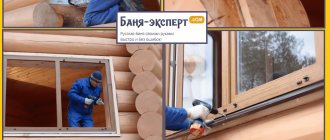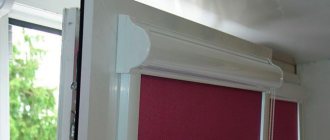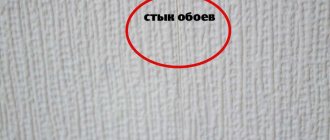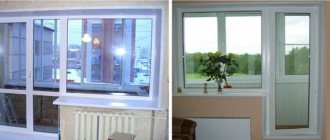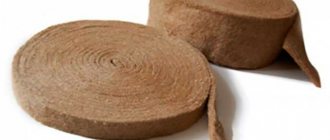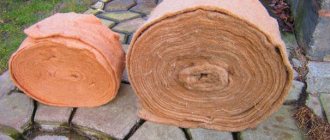Modern construction, renovation and energy saving. Myths and reality
In the vast majority of cases, construction and finishing companies try to create for the client an ideal picture of the work they perform, in which, after installing windows, doors, roofing, etc. Comfort and coziness will reign in your home for many years. However, it is worth understanding that this is not the case.
In reality, the worst enemy of any structure is temperature. Temperature fluctuations entail changes in the volumes of substances and products made from them. If we talk about windows or doors, then you shouldn’t be surprised that cracks that were carefully sealed in summer will appear again in winter. And you should be aware that there is no escape from this. The gap is a condenser of moisture, fungus, a source of draft and a “thief” of your money at the same time. And one of the possible ways to combat it is the use of sealing elements that have a special set of characteristics, the main ones of which are compensation of the resulting temperature gap, protection from moisture and provision of ventilation. Such a seal is PSUL.
PSUL - what is it?
PSUL is a pre-compressed self-expanding sealing tape. The essence of this tape is that it is placed in a joint or seam, and it expands and fills all the gaps and cracks, including the smallest ones, thereby protecting the seams from weather influences. Its functional purpose is to create a ventilated assembly seam when installing windows, doors and balconies. It is made from a special polyurethane film with the addition of acrylic. This combination of materials provides better thermal insulation and moisture resistance. In addition, the material is resistant to aging. On the one hand, the tape has an adhesive backing, which makes working with it more convenient.
Recommendations from experts
When working with PSUL, it is necessary to remember that the final expansion of the tape depends on the ambient temperature. If work is carried out in the cold season, then you can use a regular construction hairdryer, which will speed up the expansion process of the material. Experts do not recommend purchasing a tape that is smaller than needed.
Otherwise, you may encounter very negative aspects:
- The polyurethane foam will simply squeeze out the tape.
- Leaks form.
- The installation seam may simply collapse.
- A gusty wind will blow out the PSUL.
Only the right choice of material can ensure high-quality and durable sealing so that the seam is maximally protected. If the master decides to use already expanded strips during work, this can seriously complicate the technology, which is why construction manipulations will be of poor quality.
For additional protection of the tape, you can use a self-adhesive plastic strip. The product will perfectly cover the outside assembly seam from the negative effects of ultraviolet radiation, and will also extend the final service life.
Scope of application and advantages of PSUL
Depending on the specifics of the product in combination with which the PSUL will be used, and the tasks assigned, there are tapes for waterproofing, tapes for heat, water and noise insulation, tapes for vapor and waterproofing.
Today, replacing old wooden windows with new metal-plastic ones is quite a popular and advisable procedure. Such windows protect the house from cold, wind, moisture and noise, are simple and easy to use, durable, and also fit perfectly into any interior. A plastic window is a complex product. However, the installation process is also difficult to call easy. Often, when choosing windows, a gross mistake occurs - the client selects only the profile manufacturer, color and, at most, the type of fittings. However, in addition to the quality of the profile itself and the double-glazed window, the process of installing the window, as well as the execution of the seam, is of great importance: sealing, sealing, fastening. The weakest point in the window opening is at the junction of the window and the wall, which is filled with polyurethane foam. The polyurethane foam itself quickly collapses when exposed to moisture and ultraviolet radiation (sunlight). To fill all remaining gaps during window installation, a special PSUL tape for windows is used, protecting the foam from the specified climatic influences.
The next area of application of PSULs are balcony blocks. In this case, tapes with heat, water and noise insulation properties, or butyl tapes with vapor and waterproofing functions are most often used.
In some cases and under certain conditions, PSUL can be used when working with roofing. For roofing, it is advisable to use a tape that has waterproofing characteristics. Possible areas of application include sealing gutters, slate joints, tiles, metal tiles, roof windows, etc.
The advantages of PSUL over other materials are:
- ease of installation (pasting the tape is done in one motion, the tape bends and cuts easily);
- compatibility with most materials and types of surfaces (plastic, metal, concrete, stone, etc.);
- high level of shear resistance;
- high environmental performance;
- fire safety;
- optimal insulation quality regardless of weather conditions;
- durability;
- convenient packaging.
Manufacturers
PSUL and the technology for its use were developed by the German company Illbruck, which is its first manufacturer. The most famous domestic products are Profband PSUL and Liplent PSUL. Belarusian products PSUL-EUROBAND have decent quality.
USEFUL INFORMATION: How to get rid of mold and condensation on plastic windows?
Technical characteristics of PSUL
Among the main technical characteristics of self-expanding tapes are:
- vapor permeability coefficient;
- adhesive bond strength;
- degree of waterproofness;
- operating temperature;
- conditional durability.
Vapor permeability is the ability of a material to pass or retain water vapor. Measured in (m2*h*Pa)/mg. In accordance with GOST 30971-2002, this indicator should be no more than 0.15.
Adhesive bond strength is the ability of a material to resist chipping or peeling. Measured in MPa (kgf/cm2). In accordance with GOST 30971-2002, this indicator must be at least 0.3 MPa (3.0 kgf/cm2).
The degree of water resistance is the level of resistance of a material to the transmission of water droplets. Measured in Pa. According to GOST 30971-2002, this indicator should be at least 600.
Operating temperature - shows the temperature limits within which the material is capable of performing its functions. Measured in degrees Celsius. For each PSUL it is individual, but not less than -36°C and not less than +70°C (according to GOST 30971-2002).
Conditional durability is the number of years during which the material stably maintains its passport characteristics (subject to compliance with the installation rules). It is measured in years and, in accordance with GOST 30971-2002, must be at least 20 years.
Installation dimensions PSUL. Features of choice.
After installing metal-plastic windows, doors or balcony sections, it is important to choose the right sealing tape. If you are sealing joints yourself, without resorting to the services or consultations of installation companies, you should adhere to the following basic recommendations.
First you need to pay attention to the width of the adhesive layer. This indicator is determined based on the gap between the mounting foam and the outer part of the quarter window opening and can range from 10 to 20 mm (in other cases, the size of the adhesive layer is selected individually). The next important parameter of the tape is its maximum expansion. To ensure maximum efficiency, the gap should exceed the value of the tape in the compressed state by no more than 20 percent (critical value - 50 percent). Otherwise, the performance of the PSUL will be unsatisfactory. For example, if the gap between the window and the wall is 13 mm, you should choose a tape with a rolled thickness of 10 mm. If, however, a tape with a maximum expansion of 20 mm is installed in a gap of 17 mm, its efficiency indicators will be lower than that of a tape 12 mm thick with an expansion of up to 30 mm.
Procedure for working with sealing tape
Gluing PSUL to the window frame
Installation of pre-compressed sealing tape occurs as follows:
The PVC window and window opening are prepared for installation. To do this, dirt and loose plaster are removed, the surface is cleaned of dust using a vacuum cleaner, and wiped with a damp cloth. It is recommended to treat the surface of joints and seams with a special dust-removing compound.
The surface of the quarter is coated with an acrylic primer for exterior use. Markings are made and fasteners are installed. A few centimeters (3–5) from the beginning and end of the roller are cut off and not used. A piece of sealant is cut to the required length and the paper layer is removed. The tape is installed on the outside of the frame facing the street, with a distance of 3–5 mm from the outer edge of the quarter. The product is pressed to the surface. PSUL tape: technical characteristics, GOST
The PSUL is glued end-to-end, there should be no overlap. Vertical seams are filled without interrupting the tape at cross joints. Do not bend the seal at the corners.
After filling all the gaps between the window and the wall, you must wait until the tape expands to its free state. The rate of increase in the thickness of self-expanding material to working condition:
- at a temperature of 0°C the tape expands to the optimal size in 48 hours;
- at an outside air temperature of +18–20°C, the expansion process lasts 2–3 hours;
- at +30°C expansion occurs in 0.5 hours.
Price PSUL. Manufacturers
The main pricing factors for sealing tapes are:
- Overall dimensions, mm;
- roll length, m;
- composition and functional features;
- country of origin and level of delivery complexity;
- number of resellers.
The first three items on the list practically do not change over time and do not have a significant impact on price changes. The last two points affect the cost of the product to a much greater extent for the end consumer. Therefore, it is more advisable to buy PSUL from a regional representative of the manufacturer. This will definitely allow you to save on insulating your home. The next thing to pay attention to is the brand name. You should not give preference to companies that you have not heard of. Reviews from real buyers of the products you are interested in, which can be found on the Internet and in print publications, will help you avoid getting into trouble. You can also seek advice from relatives, friends and acquaintances.
Among the sealing materials from domestic and foreign manufacturers on the market, it would not be out of place to mention such an eminent domestic manufacturer of sealing tapes as the Robiband company. Today, thanks to the use of advanced technological solutions, flexible pricing policy and successful management, Robiband is the leader in the segment of polymer sealing tapes, producing products of the highest quality in accordance with European and world standards. The company's products are in demand both in Russia and abroad.
Purchase and installation of PSUL
You can buy PSUL wholesale and retail by placing an order online, by phone or by visiting a store in person. As for installation, everything is extremely simple. The surface on which the tape will be applied must be dry, cleaned of dust and degreased. The last operation is optional, but provides higher adhesion of the tape to the surface. After preparing the surface, everything must be done quickly so that the tape does not have time to expand. Using a tape measure or other tool, measure the dimensions of a window, door or roofing sheet, quickly unwind, cut and glue the appropriate piece of tape. Ready. Now your home is insulated and reliably protected from climatic influences.
Tape installation: preparation and gluing
The frame must be installed without sashes and double-glazed windows on support spacers.
Orient the window correctly according to all indicators of the measuring instruments. Remember that the sealant should be properly fixed to the frame around the entire perimeter in a seam or butt so that the window does not freeze or leak. Basic installation steps
| What to do? | How to do? |
| Prepare the surface | Remove dust and construction debris, wet wipe and degrease the surface. Pre-treat the brick or concrete surface with an acrylic primer. This will increase the strength of the outer layer and prevent the chalking layer from falling off. |
| Fix the dimensions | Measure the beam, window, doorway to understand how much sealant will be needed. |
| Stick PSUL | This must be done as quickly as possible, because the tape will quickly begin to expand. The average is 20-30 minutes at t +20°C. |
| Eliminate external factors | To do this, you can install a plastic cover on the outside. |
PSUL for doors seals well the gap between the door frame and the wall. The sequence of installing the tape is the same as when installing it on windows.
Scheme of proper sealing of a window frame
Proper window sealing, in addition to gluing the PSUL, takes into account three processes (from left to right): 1 - gluing the PSUL on the outside of the window; 2 - gluing a vapor barrier tape on the inside to protect the window seam and the room from moisture; 3 - use of membrane-type diffusion tape under low tide
PSUL for timber
When a house is built from profiled timber, PSUL is used as an inter-crown seal. The tape, fixed in the groove of the profiled beam, expands naturally and completely fills all the gaps.
PSULs are placed in the outer grooves on top of the beam and in the connecting places (cups) in two rows. To save money, you can use sealant only to seal the timber in external walls.
PSUL under the ridge
The installation of the roof of the house ends with the installation of the ridge. The tape is suitable for both a ventilated ridge (20/40 or 20/50) and a regular one (from 10/10 to 20/50). It is used to protect the roof from blowing wind and snow.
The material is glued to the edges of the ridge element and pulled to the roof with roofing screws. To glue the PSUL to a ventilated ridge, you need to maintain a distance of 3-5 cm from the ridge element to the roofing surface.
The video from 2:46 shows how to glue PSUL when installing a ridge:
The degree of opening of the PSUL should be at the level of 75-90%, which will protect the under-ridge space from the penetration of insects, wind and snow, but will allow air to pass freely, creating full ventilation of the attic.
IMPORTANT! PSUL encoding 20/50*4 means that the tape width is 20 mm; made of polyurethane; thickness 50 mm; winding length in the roller is 4 m.
